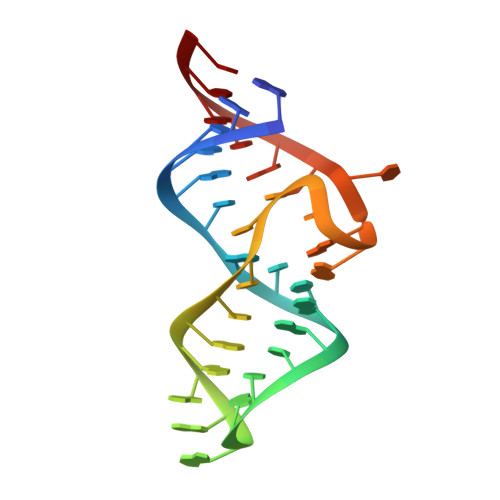Improving the Accuracy of NMR Structures of RNA by Means of Conformational Database Potentials of Mean Force as Assessed by Complete Dipolar Coupling Cross-Validation
Clore, G.M., Kuszewski, J.(2003) J Am Chem Soc 125: 1518-1525
- PubMed: 12568611
- DOI: https://doi.org/10.1021/ja028383j
- Primary Citation of Related Structures:
1O15 - PubMed Abstract:
The description of the nonbonded contact terms used in simulated annealing refinement can have a major impact on nucleic acid structures generated from NMR data. Using complete dipolar coupling cross-validation, we demonstrate that substantial improvements in coordinate accuracy of NMR structures of RNA can be obtained by making use of two conformational database potentials of mean force: a nucleic acid torsion angle database potential consisting of various multidimensional torsion angle correlations; and an RNA specific base-base positioning potential that provides a simple geometric, statistically based, description of sequential and nonsequential base-base interactions. The former is based on 416 nucleic acid crystal structures solved at a resolution of
Organizational Affiliation:
Laboratory of Chemical Physics, Building 5, National Institute of Diabetes and Digestive and Kidney Diseases, National Institutes of Health, Bethesda, Maryland 20892-0510, USA.















